So, you're looking to enjoy seafood while being mindful of the environment?
Ever heard of handlining?
Imagine this: a serene fishing experience that not only guarantees a bountiful catch but also contributes to sustainable fishing practices.
Consider a method that lets you play a part in preserving marine ecosystems while relishing the fruits of the sea.
Intrigued? Let's explore how handlining offers a unique perspective on eco-friendly seafood choices and why it's gaining popularity among conscientious consumers like yourself.
Key Takeaways
- Hand lining is a sustainable fishing practice with minimal impact on marine life.
- Selective fishing methods allow for the release of undersized fish unharmed.
- Integrating automated jigging machines enhances efficiency in hand lining.
- Responsible sourcing reduces unwanted by-catch and supports biodiversity conservation.
Sustainable Hand Lining Practices
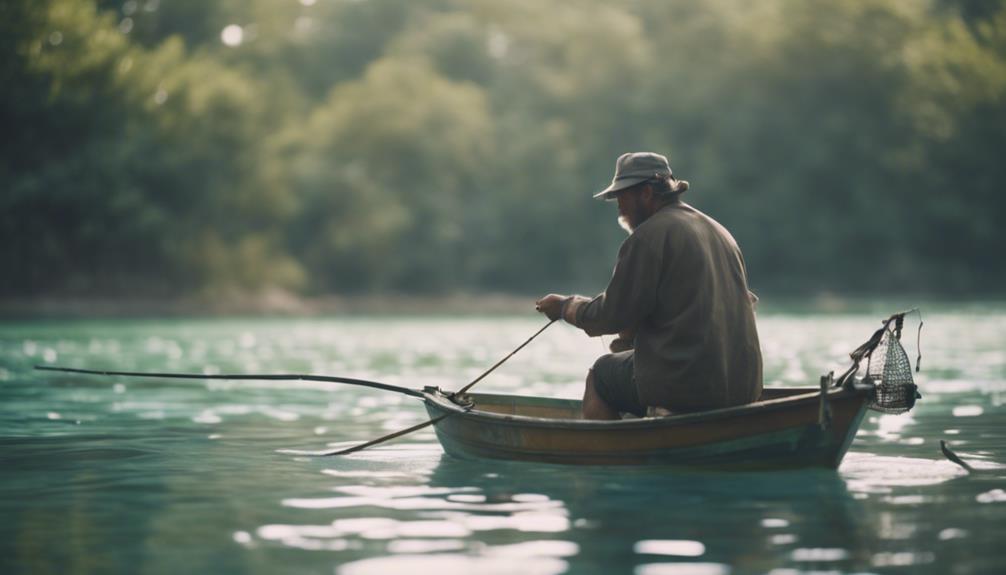
When practicing sustainable hand lining, fishermen use a traditional, low-impact technique that minimizes harm to the environment and promotes selective fishing practices. This method, known for its minimal impact, is environmentally friendly and focuses on sustainable fishing practices.
Handlining is a selective approach, capturing only a small percentage of the shoal and allowing for the release of undersized specimens unharmed. Typically employing hooks with feather lures and a heavy weight at the end of a line, handlining is a preferred method when fish are feeding rather than breeding.
Some Cornish vessels have integrated automated jigging machines into handlining operations, enhancing efficiency while maintaining low impact on the marine ecosystem. By adopting these sustainable practices, fishermen contribute to the preservation of marine life and habitats.
Conservation Techniques for Hand Lining
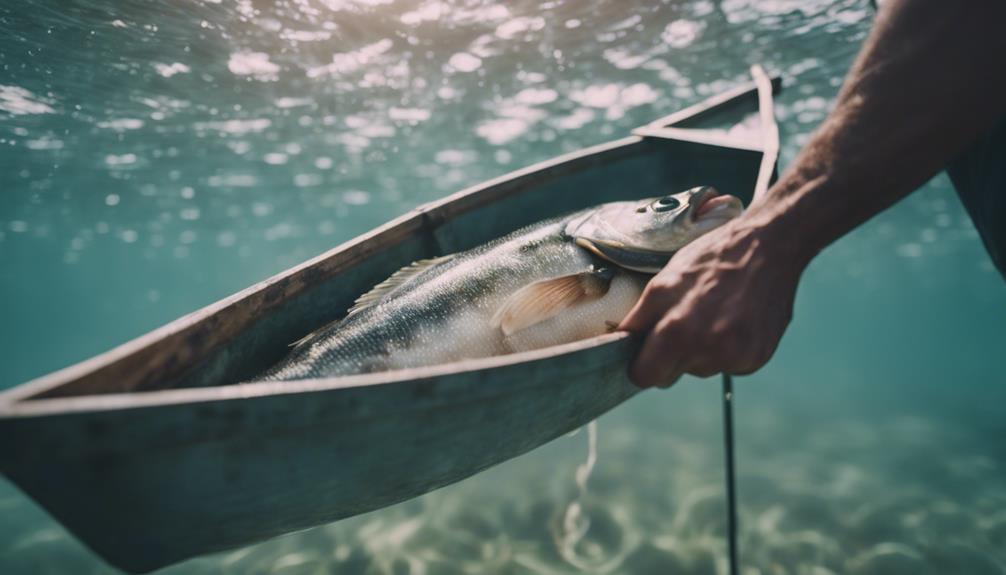
To enhance the sustainability of handlining, conservation techniques are essential. Handlining is a low-impact fishing method that minimizes harm to marine life. It's a selective approach, best used when fish are feeding, not breeding, ensuring sustainable fishing practices.
This technique allows you to release undersized fish unharmed and has minimal impact on the seabed, with rare unwanted species caught. In mackerel handlining, traditional feather lures are often used along with a line containing multiple hooks, promoting sustainability.
Some vessels in Cornwall have adopted automated jigging machines to improve efficiency and selectivity, using various lures and baited hooks for low-impact fishing. These conservation methods are vital for preserving marine ecosystems while enjoying a sustainable catch.
Eco-Friendly Approaches in Hand Lining
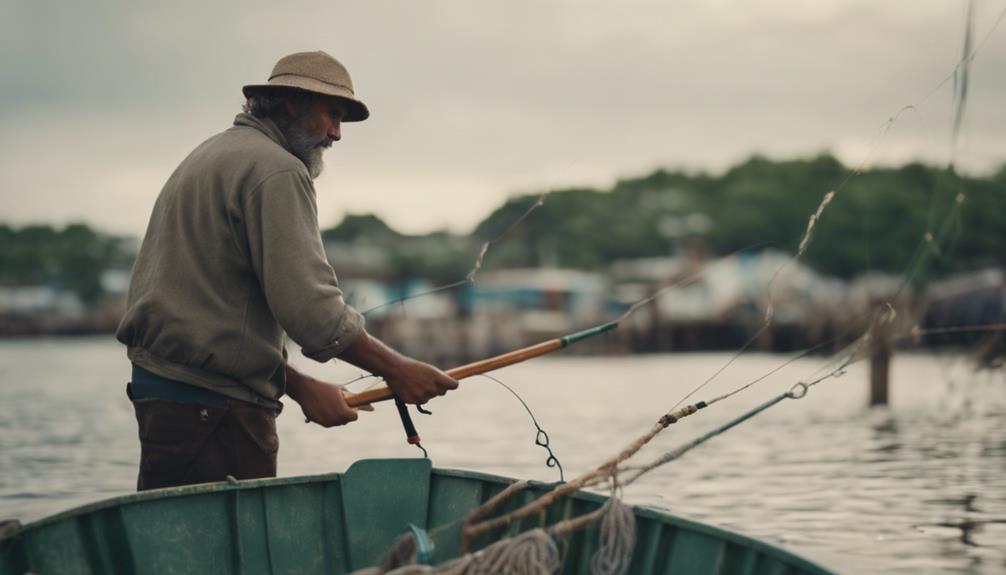
Moving on to eco-friendly approaches in hand lining, you'll discover innovative methods that prioritize sustainability while enjoying a fruitful catch.
Handlining is a low-impact, sustainable fishing technique that's selective, capturing only a small portion of the shoal to minimize negative impacts on marine ecosystems. It's particularly suitable when fish are feeding, not breeding, ensuring responsible fishing practices.
This method allows for the easy release of undersized fish, aiding in the conservation of fish populations. Handlining also reduces unwanted by-catch and has minimal impact on the seabed, promoting eco-friendly fishing practices.
When handlining for mackerel, using traditional feather lures and storing the catch in slush ice helps maintain freshness, making it a sustainable seafood choice.
Responsible Seafood Sourcing Methods
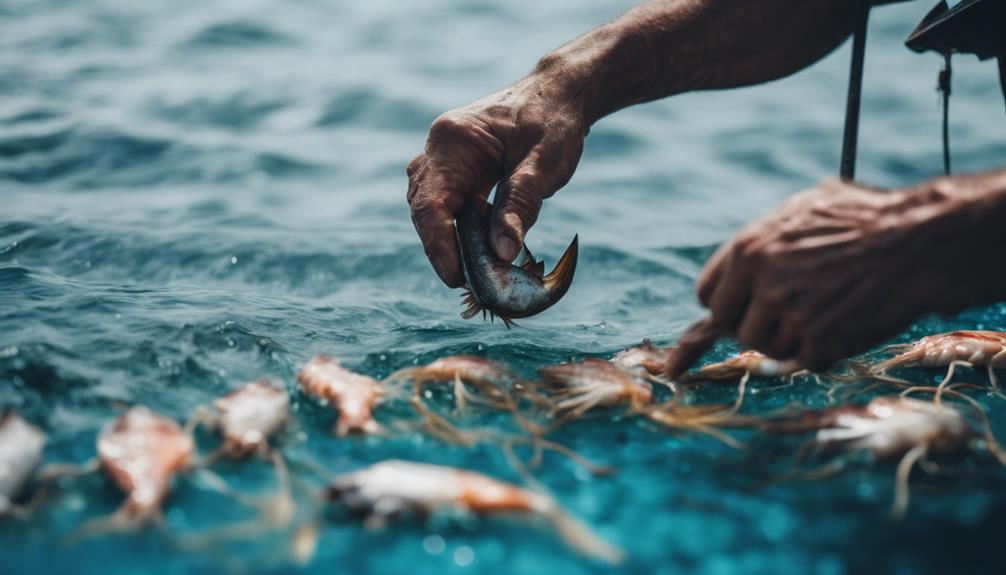
For those seeking sustainable seafood options, understanding responsible sourcing methods is key to supporting eco-friendly fishing practices. When it comes to handlining, this traditional fishing method offers a low-impact approach that guarantees selective catches and minimal environmental impact.
Here are some reasons why handlining is considered a responsible sourcing method:
- Handlining allows for the easy release of undersized specimens unharmed.
- It minimizes negative impacts on marine ecosystems by selectively catching only a small percentage of the fish shoal.
- This method is suitable when fish are feeding and not breeding, promoting sustainable fishing practices.
- Handlining results in minimal disturbance to the seabed and reduces unwanted species by-catch, contributing to responsible seafood sourcing.
Sustainability Measures in Hand Lining
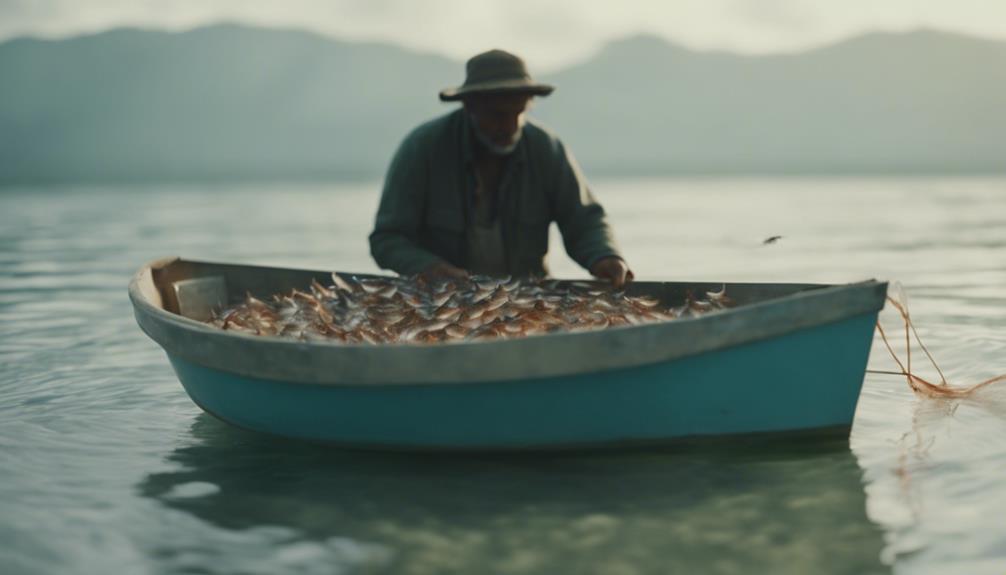
Let's explore how sustainability is integrated into handlining practices to guarantee eco-friendly seafood sourcing.
Handlining is a low-impact and vital fishing method that plays a significant role in sustainable fishing. By using traditional feather lures in mackerel handlining, fishermen can target specific species while minimizing environmental impact. This method allows for the release of undersized fish, supporting biodiversity conservation and ecosystem balance.
With automated jigging machines, efficiency is increased without compromising the environmentally friendly nature of handlining. The minimal negative impact on marine ecosystems, reduced seabed disturbance, and the ability to avoid unwanted species by-catch make handlining a responsible choice for those seeking sustainable seafood options.
Conclusion
So next time you're craving seafood, remember to choose handlining for a more eco-friendly option. By using this traditional method, you can help safeguard the ocean and support sustainable fishing practices.
Make a positive impact on the environment and enjoy delicious seafood guilt-free. Handlining isn't only a responsible choice, but it also guarantees that future generations can continue to enjoy the bounty of the sea.
Make a difference with every bite you take!
👨👩👧👦 Dwight’s a married dad of 4 who loves to cast a line 🎣 into both fresh and salt waters. His heart belongs to his family and the sea. 🌊 #FamilyMan #FishingLife #DadOf4 🐟✨

